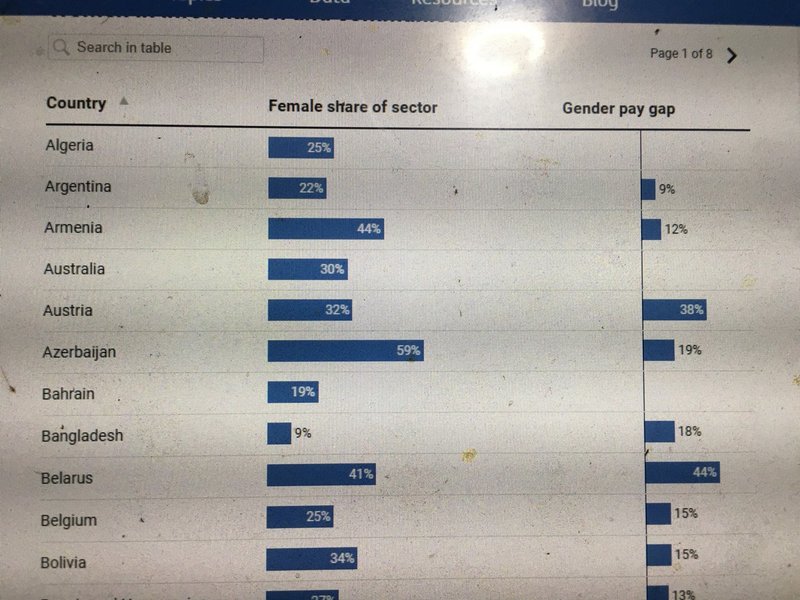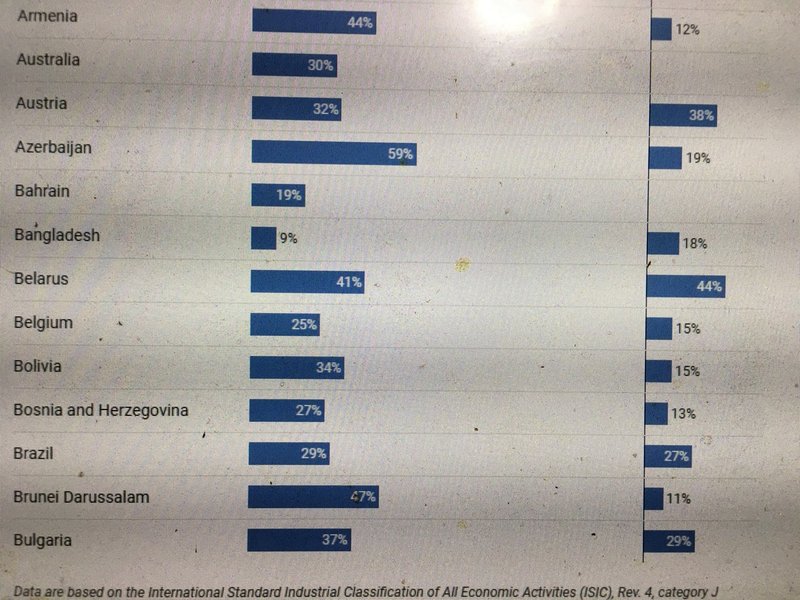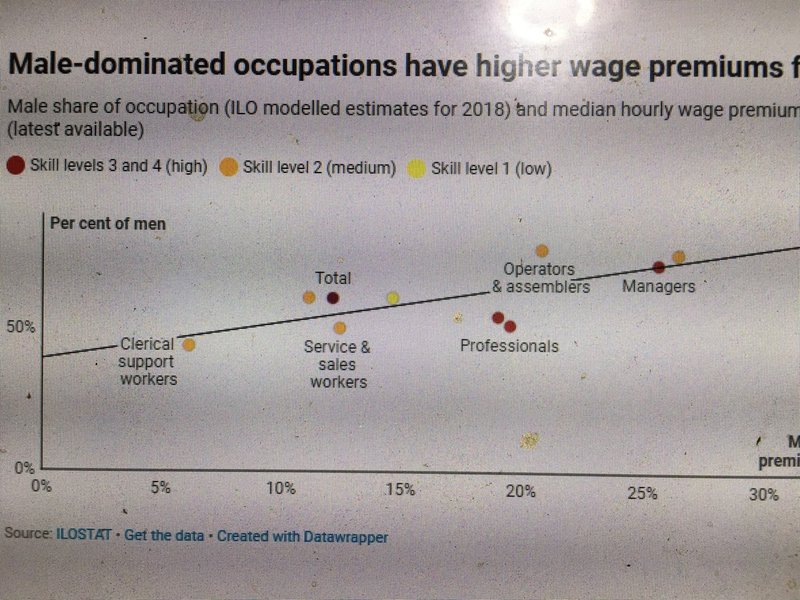
ILOSTAT: Tech’s persistent gender gapテック持続的なジェンダーギャップ
Tech’s persistent gender gap is well documented, but it might surprise you to learn that the gulf transcends national wealth and development lines.
技術の持続的なジェンダーは十分に文書化されていますが、湾岸諸国の富と開発ラインを超越していることを知って驚くかもしれません。

Around the world women are less likely to be employed in the technology sector and when they are they usually get paid less, according to ILOSTAT data.
In almost every country, regardless of income level or development stage, women are under-represented in the information and communication sector, which includes IT. Based on data available for 116 countries, women’s median share of employment in those positions is less than one third.
Based on data from 75 countries, when women do get a digital job, they face a median gender pay gap of 21%, which is significantly larger than the 16% median gender pay gap for the overall economy.
ILOSTATのデータによると、世界中の女性はテクノロジーセクターで雇用される可能性が低く、その場合、女性の給与は通常より少なくなります。
ほぼすべての国で、所得レベルや開発段階に関係なく、女性はITを含む情報通信部門で十分に代表されていません。 116か国で利用可能なデータに基づくと、これらの職での女性の就業率の中央値は3分の1未満です。
75か国のデータに基づくと、女性がデジタルの仕事に就くと、女性の男女格差の中央値=21%になります。これは、経済全体の男女差の中央値=16%を大きく上回っています。
Women in information and communication


Japan 26% 24%
The gap could be due in part to the differing roles taken by men and women in the sector. According to the ILO Global Wage Report 2018/19, when women enter the information and communications technologies (ICT) workplace, they tend to be concentrated in less well-paid occupations such as ICT project managers, rather than the better paid ICT software development positions.
Furthermore, male-dominated occupations tend to have higher gender wage gaps, particularly when high skills are required.
このギャップは、一部には、この部門で男性と女性が果たす異なる役割に起因する可能性があります。 ILO Global Wage Report 2018/19によると、女性が情報通信技術(ICT)の職場に入ると、女性はより良い給与のICTソフトウェア開発職ではなく、ICTプロジェクトマネージャーなどの低賃金の職業に集中する傾向があります。 。
さらに、男性優位の職業は、特に高いスキルが必要な場合に、性別による賃金格差が大きくなる傾向があります。
Male-dominated occupations have higher wage premiums for men
Male share of occupation (ILO modelled estimates for 2018) and median hourly wage premium for men (latest available)
Skill levels 3 and 4 (high)Skill level 2 (medium)Skill level 1 (low)

The findings matter, not only because they expose gender inequality in a growing sector, but also because digital skills are in demand. Thousands of jobs are created each year and this skills shortage risks holding back economic expansion. Failing to bridge the skills gap will mean the G20 countries missing out on as much as $1.5 trillion in economic growth over the next 10 years, according to estimates from Accenture.
Involving everyone in digital society is a key plank of the United Nations’ work and ICT can help speed progress toward the Sustainable Development Goals. As technology is embedded into more and more aspects of our lives, and the future of work evolves, demand for digital skills is likely to keep increasing. This highlights the need to get more women into the industry and paid more equally.
調査結果は、成長するセクターで性別による不平等を明らかにするだけでなく、デジタルスキルが求められているためにも重要です。毎年数千の雇用が創出され、このスキル不足は経済拡大を妨げるリスクを抱えています。アクセンチュアの推定によると、スキルギャップを埋めることができなければ、G10-諸国は今後10年間で1.5兆ドルもの経済成長を逃してしまいます。
デジタル社会のすべての人を巻き込むことは、国連の取り組みの重要な計画であり、ICTは持続可能な開発目標に向けての進展を促進するのに役立ちます。テクノロジーが私たちの生活のますます多くの側面に組み込まれ、仕事の未来が進化するにつれて、デジタルスキルの需要は増え続けるでしょう。これは、より多くの女性を業界に招き、より平等に賃金を支払う必要があることを強調しています。
この記事が気に入ったらサポートをしてみませんか?
